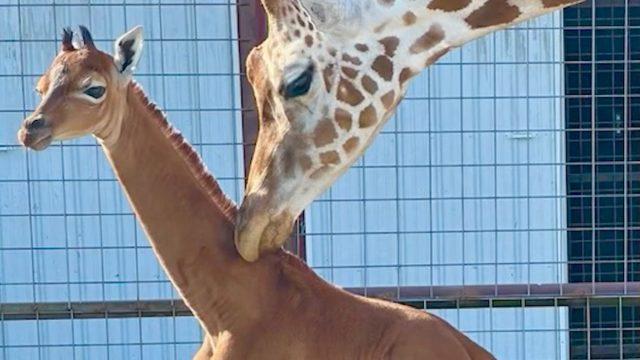
The Giraffe Who Found Its Spots is the name of a children’s book, so it’s not surprising the spotless giraffe born this week, in real life, sounds like something out of a fairy tale. The six-foot-tall animal is living in the Brights Zoo in Limestone, Tennessee. “Giraffe experts believe she is the only solid-colored reticulated giraffe living anywhere on the planet,” according to a Brights Zoo press release. Stephanie Fennessy, executive director of the Giraffe Conservation Foundation, said the group had “never seen a similar giraffe in the wild in Africa,” according to the Washington Post. So, how could a spotless giraffe happen? And what will his name be? Keep reading to discover more.

A “spotless” giraffe would refer to a giraffe that lacks the characteristic spots and markings commonly seen on its body. While giraffes are known for their distinctive coat patterns, it’s theoretically possible for a giraffe to have fewer or no spots due to genetic mutations or variations. However, it’s important to note that the spots on giraffes serve various purposes in their natural environment, including camouflage, thermoregulation, and social communication, so a giraffe without spots might face challenges in these areas. Read on for a bit more detail on how this could occur.
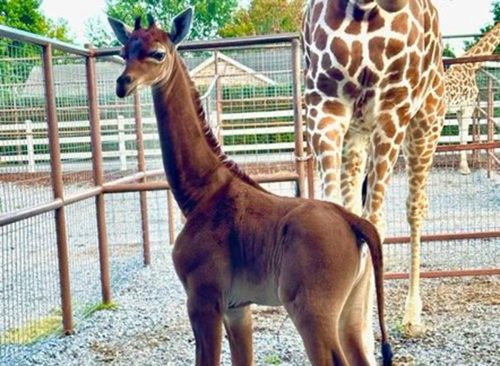
“Name the baby giraffe,” touts the zoo on its Facebook page. “We have 4 names to choose from. The names and their meanings are below:
–Kipekee – Unique
–Firali – Unusual or Extradonary
–Shakiri – She is most beautiful
–Jamella – One of great beauty
This will run until Labor Day, September 4. On that day, we will tally up all the votes and announce her name.If you would like to get involved in helping giraffe in the wild please visit Save Giraffes Now , the more of us that support these organizations that do work in the wild the better. We want to ensure that future generations get the opportunity to see these wonderful animals in the future.”
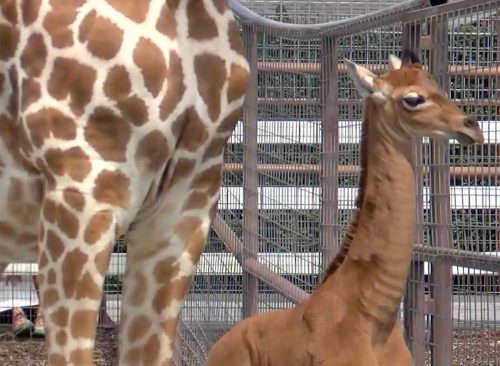
Just like any other species, giraffes can experience genetic mutations that result in variations in their appearance. If a mutation were to occur in the genes responsible for producing spots or determining coat patterns, it could lead to a giraffe with fewer or no spots.
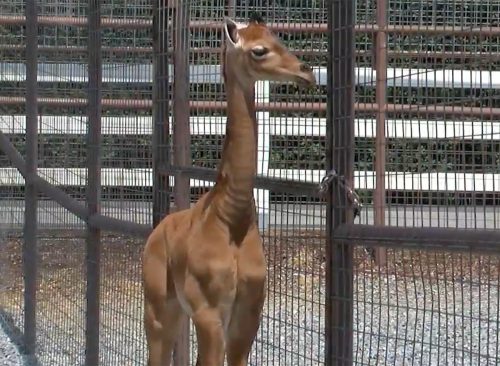
In captivity, humans have bred animals for specific traits, and it’s possible that someone could selectively breed giraffes to have fewer spots or even a solid color. This would involve intentionally pairing giraffes with fewer spots and continuing this breeding over generations to achieve the desired appearance.
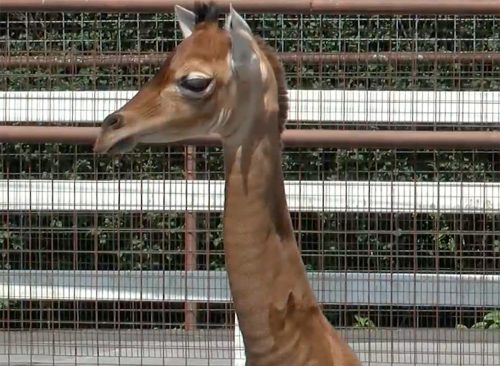
In the wild, rare individuals with unusual coat patterns can occasionally appear due to natural genetic variation. If a giraffe with reduced spotting were born, it might not necessarily have a significant disadvantage if its reduced visibility didn’t affect its survival and reproduction. However, it’s important to consider the potential downsides of a “spotless” giraffe—read on.
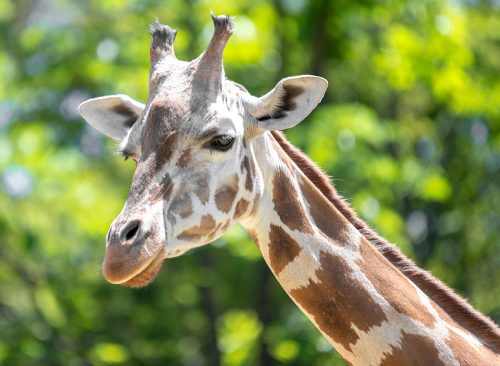
The spots on a giraffe’s coat serve as a form of camouflage, helping them blend into their environment and evade predators. A giraffe without spots might be more visible and vulnerable to predation.

The spots on a giraffe’s coat are thought to play a role in thermoregulation, helping to regulate body temperature by creating air channels that facilitate heat dissipation. A spotless giraffe might struggle to manage its body temperature effectively.
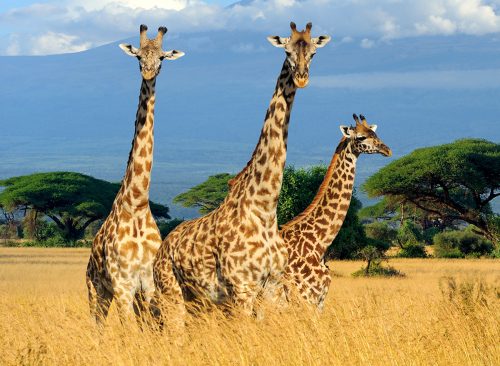
Giraffes also use their spots for social communication and recognition. The unique patterns help individuals identify one another, which is important for maintaining social bonds and interactions. A giraffe lacking spots might face challenges in these social interactions.
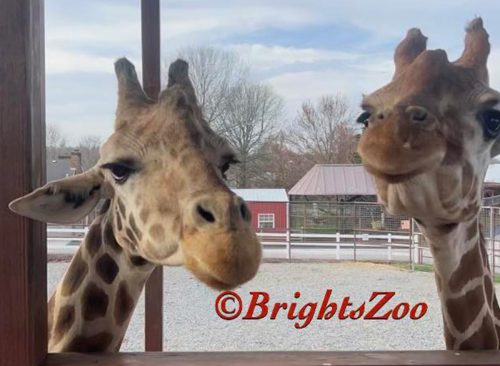
“The international coverage of our patternless baby giraffe has created a much-needed spotlight on giraffe conservation. Wild populations are silently slipping into extinction, with 40% of the wild giraffe population lost in just the last 3 decades,” said Tony Bright, the founder of Brights Zoo.














